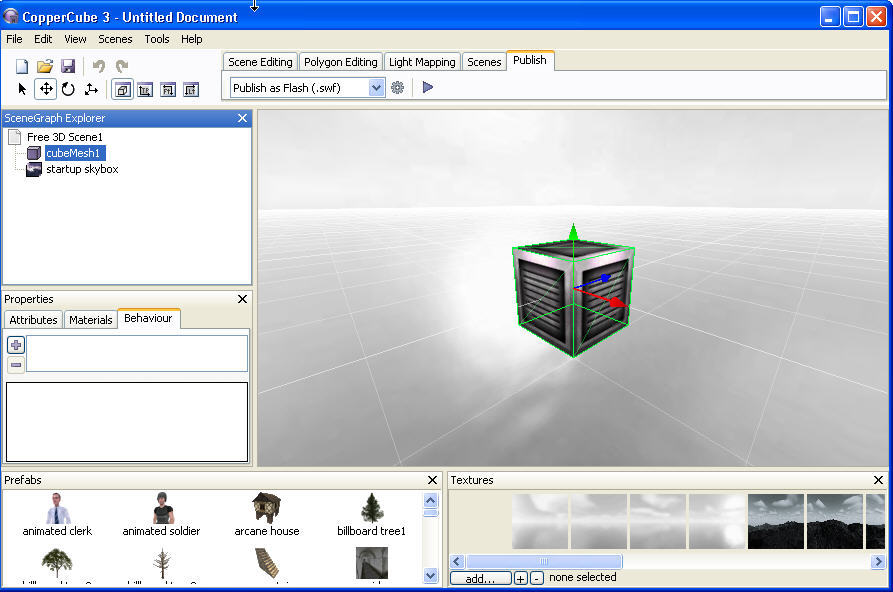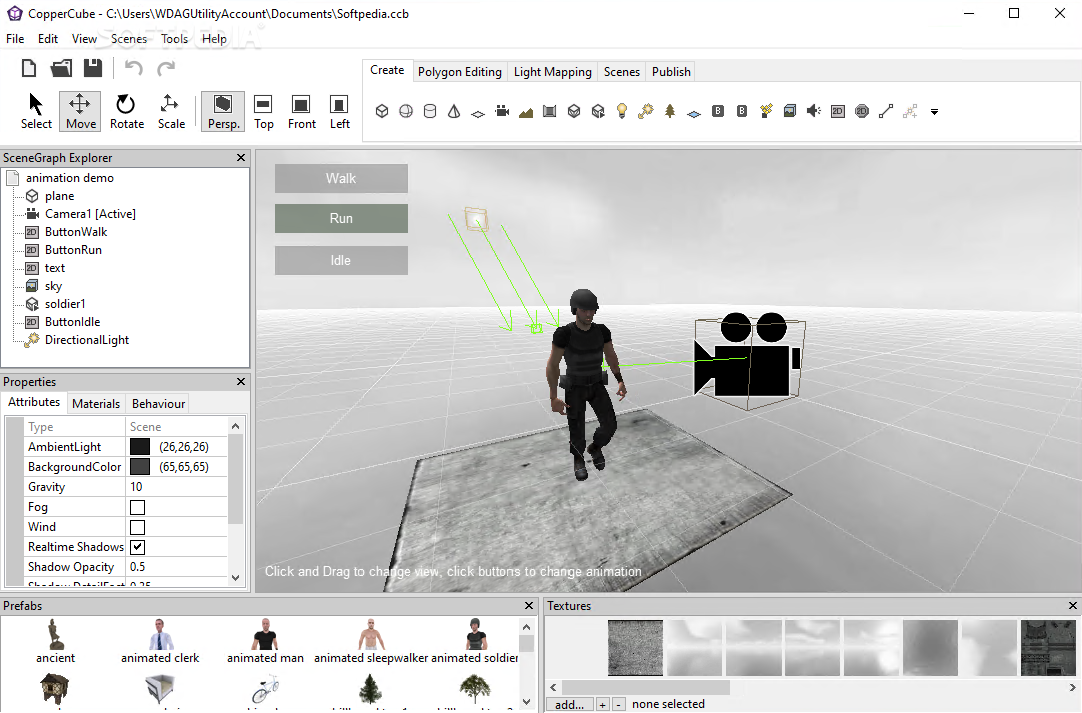

if you have a chrome icon somewhere on your desktop or in the task bar, right click it, select 'Properties' and there you should get some options how chrome is launched.Workaround 3: Add the parameter -allow-file-access-from-files when starting Chrome.At the time of this writing, Firefox happily reads files from your local disk. Workaround 2: Use another browser, like for example Firefox.Workaround 1: On Windows, CopperCube runs its own webserver if you have the option enabled (it is on by default), and uses it if you click Tools -> Test as WebGL.This is usually caused by the security restriction that Chrome doesn't want to read files from your disk. If you want to run your WebGL scenes using the Google Chrome browser from your local disk, you might get an error like Error: Could not load file 'copperlichtdata/bjs' Problems running your WebGL scenes in Google Chrome
COPPERCUBE ENVIRONMENTAL HOW TO
SDK freely from its website, it contains a detailed documentation and a lot of examples and tutorials showing how to extend CopperCube 3d scenes using JavaScript: See the scripting overview for a detailed description how to use this feature.Īdditionally, there is a second, more detailed way to script your WebGL app, which only works for WebGL and not on the other targets: CopperCube uses its own WebGL based JavaScript 3D engine named ' CopperLicht'. HTML file:īesides with actions and behaviors, you can make your WebGL scenes more interactive using a built-in scripting language named 'JavaScript'. If you want it to be hidden, just add a CSS rule like "div.cldebug " to the header of your.

The text is marked with the CSS class 'cldebug', so you can influence its appearance easily. This is an option in the publishing settings of WebGL.ĬopperCube projects published as WebGL/JavaScript have one big advantage: They don't need any plugin and run directly in the browser.įor a detailed and up-to-date list of how to get a browser supporting WebGL, see the CopperLicht Browser Support site.ĬopperCube WebGL projects sometimes write informational texts below the canvas, for example when loading a texture has failed, or there was a problem creating a shader. You need to manually trigger switching to fullscreen in this way because WebGL has a security limitation, which lets an app only switch to fullscreen if a user clicks with the mouse or presses a button.įor non-fullscreen apps, the WebGL automatically can use the mouse lock for FPS cameras, if wanted.
COPPERCUBE ENVIRONMENTAL DOWNLOAD
You can download this action from the Download Scripted Actions page from the CopperCube homepage. For this, add a 'When a key is pressed do something' behavior or a 2D Overlay with a 'when clicked on this do something' behavior into your app, and add the 'Switch to Fullscreen' action to it.

Since version 4.5, CopperCube supports switching your WebGL app to fullsceen, and optional also locking the mouse cursor, for nice 'First Person Shooter' cameras. Switching to Fullscreen and MousePointer lock CopperCube will tell you when this is the case and what to do about it. Some browsers only run WebGL content generated from CopperCube when it is comming from a web server (not from local disk).There are still a few old browsers out there which don't support WebGL.

When the browser doesn't support WebGL 2, a fallback to WebGL 1 is used. Coppercube WebGL documentation Back to Content WebGL (.html) Target


 0 kommentar(er)
0 kommentar(er)
